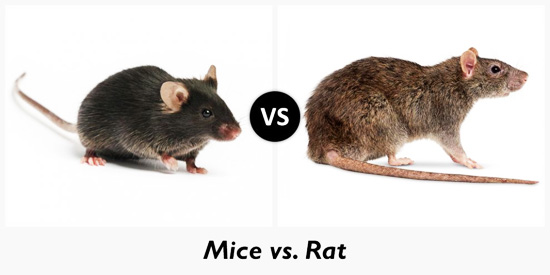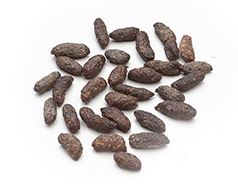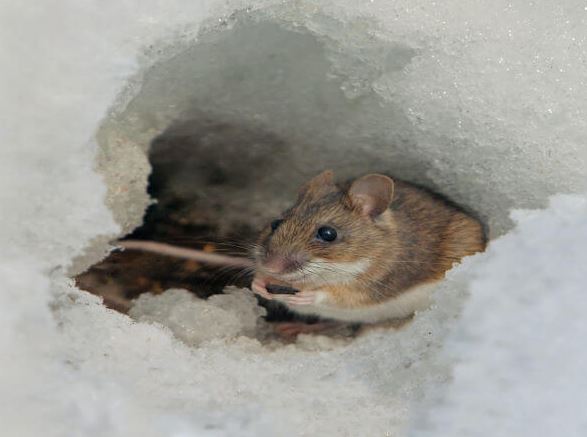
Source: PestWorld.Org
How Do Mice & Rats Damage Homes & Buildings?
Rats and mice can cause structural damage to homes, apartments, offices, and virtually any type of building through gnawing, nest-building, and defecation:
- Mice will chew on just about anything that they see as useful in building their nests. This could be wood, paper, cloth, books, etc.
- A mouse will gnaw and burrow into upholstered furniture – or seats of cars – to create a hidden, snug nest.
- Insulation is not safe from mice either. They will tunnel into insulation inside walls and attics, either to make a home or to gather soft materials for their nests.
- Mice also will chew on the insulation around wires. This has been known to cause a real threat of fire.
- Mice will even build their nests in large electrical appliances, again chewing on or through insulation and wiring, which can cause the appliance to short circuit, malfunction, or lead to the risk of fire.
- The mice have no respect for any item … they will gnaw on and into just about any chewable item that is stored in the attic, basement, garage or closet – including irreplaceable family heirlooms, valuable paintings, and important documents.
… And the more hidden away and undisturbed an item or area is, the more likely a mouse or rat is to see it as a comfortable, secure home.
Then, when that mouse travels around your home seeking nesting materials, food, and water, it will leave behind urine trails and fecal droppings. Not only do these contaminate the surfaces (and foods) on which they land and cause the potential spread of disease, they also leave a scent trail for other mice – letting them know this is a great place to live!
What Do Mice Eat in Homes?
Mice are not very fickle when it comes to food, they will feed on a vast array of stored food items or pet foods.
If a food item comes in a cardboard box or paper wrapping – it’s a double bonus for the mouse. The packaging can be used for nesting and the food inside for eating.
While they are in the pantry or cupboard, the mouse also will contaminate food with their urine, droppings, and hair.
Although it eats only about 3 grams of food per day, it is estimated that a mouse contaminates and destroys 10 times more food than it eats as it leaves its droppings, nibbles on packages, and leaves numerous partially eaten foods behind – leaving all of it inedible and unfit for humans – or pets.
Even without food being inside, a mouse will gnaw on plastic containers and wooden items, and shred stored paper – paper towels, napkins, etc. – for their nests.
Outside, mice and rats can damage the structure of your home in their attempts to get inside. Mice need a hole the size of a dime to squeeze into your home. But if a hole is found, and it’s not quite big enough, it will chew on the structure until it is!
Mice also can dig up and feed on newly planted crops in gardens, cause damage before harvest, and burrow into other areas on the property for food and nesting. |
|
Keep Rodents Away From Your Home and Your Family
Rodents spread Salmonella and other bacteria through their droppings, can trigger allergies and asthma attacks as a result of a protein in their urine, and bring with them other diseases such as murine typhus, infectious jaundice, Weil’s Disease and rat-bite fever.

Fort Pitt Exterminators are experts on Rodent elimination and control. We guarantee our work and our results.
Rodents are very crafty and they can find their way into buildings and homes through the smallest openings, literally the size of a dime or quarter. Call Fort Pitt to get rid of them fast.
Thousands of Satisfied Customers Over 30 Years

Fort Pitt has successfully serviced thousands of residential and commercial customers over the past 30 years. We know our business well, and we take pride in our work. Call us for prompt service.
Schedule a Free Inspection
Call Now: (412) 441-6300

The Preliminary Inspection – What To Look For
The first (and most important) step in controlling rodents is to inspect feeding areas and exclude mice and rats by closing entry access points. Look for tracks, droppings and other rodent signs. Our technicians are highly trained to look for:
Tracks:
Footprints and tail drags of rats can be seen in dusty areas. We will look in these areas to see if rats or rodents are using a pathway. Wet or moist soil will also show tracks.

Droppings (Pellets):
This is a tell-tale sign of activity! This coloration will help you determine if your rodent population is current. The more droppings you have, the larger the rodent population.
Gnaw Marks:
Gnaw marks are another key piece of evidence in solving your rodent problem. New gnaw marks will be rougher around the edges than older gnaw marks. Mice make clean-cut holes and rats make holes with rough and torn edges. The mice hole is about 1-1/2 inch in diameter. The rat hole is 2 inches or more. It is common for rats to gnaw on wooden structural objects such as door corners, joists of flooring and ceilings, and wall studs.
Burrows:
Rats (most often the Norway rat) may burrow along foundations and walls, beneath shrubbery or debris. The burrow entrance of a rat looks smooth and compacted. You may find fresh soil near the entrance that has been kicked out. To check to see if a burrow is active, stuff some paper into it and check the following day for its removal. Mice will burrow, but most mice holes are beneath slabs inside a building. The entry points to these burrows at cracks in the slabs, beneath expansion joints, or near support pillar footings.
Grease Marks:
The older grease marks can be smeared as they age they become dry. Look for grease markings around rafters, beams, pipes, vertical surfaces, and active runways that do not have dust or cobwebs.
Runways:
Rodent pathways or runways will be between nesting areas and feeding areas. Rats will reuse the same path, relying on kinesthetic memory. The pathway of a Norway rat is easier to spot than a mouse’s path. Outside, look for a narrow path in the dense vegetation or a pathway that has been packed. Inside, look for their runways along walls. They use the walls for guidance. They can also be found behind appliances or stored boxes and furniture. Look for their grease or smudge marks along walls, pipes, beams, and rafters.
Urine Stains:
Rodent stains are visible in a UV black light. Our technicians can utilize this technology to locate urine stains. You may also detect a musky scent. This may be an indication of the presence of rodents.
What you can do to help us eliminate rodents!
Good Sanitation
1. All rubbish piles and refuse need to be eliminated.
2. Landscaped areas need to be properly maintained with wood piles elevated off the ground.
3. All garbage containers and dumpsters should have a tight fitting cover.
4. Rodents can live on the spilled and surplus food from bird feeders and pet food.
5. Our technicians can help you identify areas of concern.
Exclusion – Remove the Stuff Rodents Want
You usually don’t have an abundance of rodents without enough food, water and shelter provided.
Where there is an abundance of rodents you have an abundance of shelters and food provided. It will have a great impact on reducing the rodent population if you remove or reduce these factors. Our professional exterminators will help you identify areas that need to be closed or sealed.

Did You Know That Rodents are the Most Common Winter Pests Reported By Homeowners and Businesses
According to the National Pest Management Association (NPMA), rodents, the most common winter pest, are a problem for nearly one-third (29 percent) of Americans. The survey also found nearly half of the infestations occurred in the fall and winter months, and most often in the kitchen.
“Rats and mice are commensal rodents and have been sharing our food and shelter for centuries, spreading disease, destroying food and property. To prevent these unwanted pests from using our homes as shelter to ride out the chilly winter months, we advise homeowners to Fort Pitt Exterminators to rodent-proof your home or building now before rodents become a big problem.”
Rodents spread Salmonella and other bacteria through their droppings, can trigger allergies and asthma attacks as a result of a protein in their urine, and bring with them other diseases such as murine typhus, infectious jaundice, Weil’s Disease and rat-bite fever. In addition to the health and sanitation concerns, rodent infestations can also damage property as they chew through wood and drywall, and can even gnaw through electrical wires, causing fires.

|






